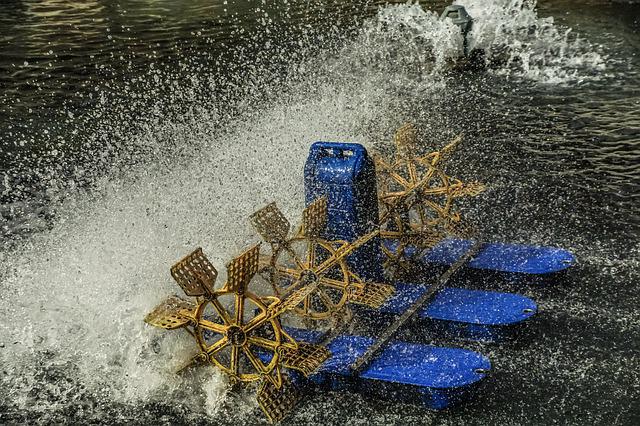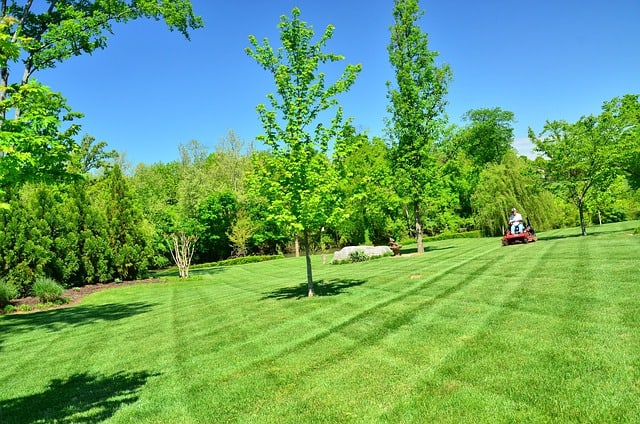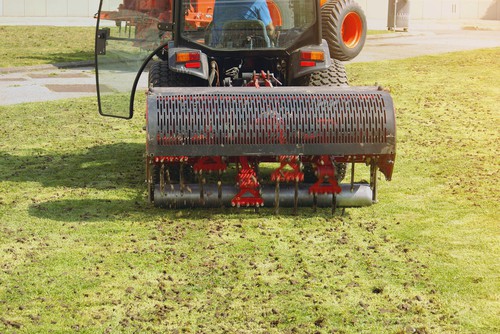Having a beautiful, clean lawn is one of the dreams of many homeowners. Therefore, knowing how to use your gardening tools correctly is important to achieving this goal. At a point in time, gardeners will have to do the comparison of the tiller vs. aerator. Tillers and aerators are two distinct tools with different functions in gardening.
What’s the difference between the two tools? What is their function?
Keep on reading as we explain the answers in detail!
Tiller vs. Aerator Differences

It’s not uncommon for some gardeners to assume the tiller and aerator perform the same function, but that’s not true. So let’s explain the function of the tiller and the aerator below.
What Is The Tiller Used For?
In simple terms, a tiller is a tool used to prepare the soil for planting purposes.
One of the most important requirements for the growth of plants is good soil. Plants will probably struggle to grow in soil that lacks nutrients or is too hard. So, gardeners use the tiller to loosen and mix compact soil to make it useful for planting.
Most of the time, a tiller is used to prepare new garden beds. In fact, the tool is necessary for improving the soil texture, thereby making seed planting easy.
In addition, tilling the soil is important to allow the free movement of nutrients in plants. Plus, it is also a simple way to uproot weeds that will later be useful as mulch.
By tilling the ground, you’re bringing fresh soil to the surface, hence allowing plants to get enough moisture.
What Is The Aerator Used For?

Aerators consist of tines or spikes that break up hard soil. As a result, there will be an easy passage of water, nutrients, and oxygen to the roots of plants.
There’s a high chance that plants will not survive if they don’t get the necessary nutrients, air, and moisture.
One major reason why gardeners use aerators on the soil is to enable air and essential nutrients to get to the plant roots. Furthermore, aeration allows organic matter to decompose, thereby fertilizing the plants. It also makes the plant roots stronger, hence creating resistance against insects, drought, and heat.
Usually, an aerator is used to maintain the lawn when the crops are already growing. On the other hand, gardeners use a tiller to start a fresh lawn.
When Is The Best Time for Tilling?
According to experts, the best time to till your garden is in the spring. During this period, the soil will probably be dry and the weather will be warm.
Tilling when the soil is dry can prevent compaction, which usually restricts the passage of water and air in the soil. Besides, weeds rarely compete with grass for nutrients during this period, thereby enabling them to grow well.
Squeeze a handful of soil to find out whether it is wet or not. If the soil forms a ball in your hands, then it is wet. But if it crumbles in your hands, the soil is dry enough for tilling.
Get rid of stones, sticks, and other debris on the lawn before using the tiller. And if you feel the soil is too dry, water it in moderation. By all means, avoid overwatering the ground to ensure the tiller works perfectly well.
When Is the Best Time for Aerating?

Preferably, aerate your lawn during the early fall since the grass will still be actively growing. While you can aerate the lawn in spring, it is not advisable.
Bear in mind that weed seeds germinate quickly in the early spring when the soil is extremely wet. During this period, the soil would be favorable for them to grow. So, if you aerate the lawn during this time, these unwanted plants will have a chance to grow roots and spread.
But in a situation where the soil is too compacted so that grass cannot grow on it, you may consider aerating during spring. Make sure you remove all sticks, stones, and debris from the lawn before working on it.
Learn more about gardening tools:
Conclusion
Now, we’re sure you don’t won’t have to do the tiller vs. aerator comparison because you already know their differences. Both tools play an important role in the healthy growth of your plants and the maintenance of the lawn. If you use these tools correctly, your lawn will be exactly the way you’ve always wished it should be.
Frequently Asked Questions
How Frequently Should You Aerate Your Soil?
One major factor to consider before aerating is the soil type. Ideally, aerating the lawn once or twice a year is enough for clay soils.
Both the sandy soil and loamy soil are porous, which enables the easy passage of oxygen to plant roots. Hence, you can aerate the soil once a year to have a healthy lawn.
Should I Mow Before Or After Aeration?
Mow the lawn before aeration, especially if you want to fertilize or reseed your lawn. Mowing immediately after aerating will not allow the new seeds to germinate.
Aerating the soil creates some holes in it that allow the easy passage of air, water, and nutrients to the plant roots. Mowing the lawn after aeration may result in the blockage of these holes.
Therefore, it is advisable to mow the lawn after aeration. Better still, you can mow the lawn a few days before aeration.
Can You Aerate Your Lawn Too Much?
Yes, it is possible to aerate your lawn too much. If you have a healthy lawn, aerating it once a year is okay to keep it healthy.
But if the soil is compacted, you may aerate it twice a year. When you over aerate the lawn, the grass may die and there’ll likely be a problem with the drainage on the soil.
As you know, aerating the lawn creates holes in it. This is why when you do it frequently, there can be a problem. Since all soil is different, they won’t respond to aeration the same way.
Nevertheless, if you have a healthy lawn, you may not need to aerate it.

Hey, I’m Lisa and I’ve been an avid gardener for over 30 years. I love writing, talking and living in the garden! Feel free to connect with me on my socials below

